Environmental management is a shared responsibility. It does not rest on the shoulders of a single citizen, government or company. However, governments do play a very important role in protecting the environment. This is because they have economic (have money), political (can make laws) and social (can influence entire populations) power over their country. Individual citizens do not have the same reach.
However, citizens do play an important role. In democratic systems, citizens can come together to put pressure on governments to adopt certain measures and laws. It is the duty of citizens to express their opinions to their political representatives. If governments are not pressured, it is very likely that they will not take any environmental action.
In 1992, at the Rio Declaration (United Nations Conference on Environment and Development), 172 governments agreed to take action to prevent the degradation of living environments (biodiversity). They also agreed on the need to ensure equitable growth and development in different countries all around the world. Since the Rio Declaration, 27 principles have been established, including two main ones to guide governments on how to act in environmental matters: the precautionary principle and the principle of sustainable development.
The precautionary principle means that where there is a serious or irreversible risk to the environment, lack of full scientific certainty shall not be used as a reason for a government not to take measures to prevent environmental degradation.
This means that even if there is no scientific certainty or irrefutable proof of harm to the environment, the simple fact that a risk or significant doubt exists is enough for the government to have a duty to act.
The principle of sustainable development means developing society without compromising the ability of future generations to meet their own needs.
To ensure that a development project does not negatively impact future generations, it must follow these three principles:
- The project respects the environment (avoids production and consumption methods that deplete the Earth’s resources too quickly, that endanger animal or plant species or that pollute heavily)
- The project ensures economic development by generating wealth or creating jobs
- The project promotes equity and social solidarity, with the ultimate aim of eliminating inequality and poverty
Equity means acting impartially and fairly to ensure that everyone is treated fairly. This translates into favouring certain people (for example, in employment) to reduce the effects of discrimination or to provide extra help to a person facing significant challenges.
Social solidarity refers to the bond of mutual support and cooperation that should exist between members of the same society.
However, it is important to be realistic about this desire for sustainable development. Very few projects meet all three criteria. Projects often provide economic development, which is usually a country’s main priority, but at the expense of the environment or social solidarity. It is therefore important to understand that this is an ideal to be achieved. Governments strive to carry out sustainable development projects, but in reality this is not always the case.
Following these principles of sustainable development and precaution, there are several concrete actions that governments can take to solve certain environmental problems. One such action is conserving and protecting biodiversity.
Despite various international agreements, biodiversity is declining around the world. According to the 2018 Living Planet Report published by the World Wildlife Fund (WWF), there has been a 60% decline in vertebrate animals between 1970 and 2014. This means that in less than 50 years, there has been an average decline of more than half of vertebrate animals (animals with an internal skeleton and a backbone).
So what can governments do? Here are some examples:
 |
Create protected areas like national parks where human activities that degrade the environment are restricted. Example: In the Galapagos Islands, where biodiversity is being threatened by mass tourism, 97% of the area is protected. |
 |
Regulate hunting and fishing, especially of endangered species, to prevent overfishing or poaching, which could cause an animal species to go extinct because it is being exploited faster than it can reproduce. This also protects certain endangered species. Example: In Indonesia, illegal fishing has been heavily monitored since 2014. Hundreds of illegal fishing vessels are seized and then sunk in order to send a message. These practices were still in effect in 2019. |
 |
Eliminate or control invasive toxic species imported from other countries intentionally or unintentionally (stuck to boats, hidden in imported fruit, etc.) that can destroy an entire ecosystem. Example: The Boiga snake was introduced to the island of Guam in the Pacific Ocean in the 1940s. By 2017, it had wiped out 10 of the 12 bird species living there. With these birds gone, several tree species are in decline because they relied on birds for reproduction. |
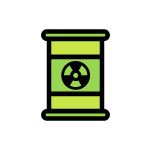 |
Implement regulations that reduce the amount of toxic materials released into the environment: for example, by prohibiting an industry from dumping its radioactive waste in a lake. This protects living environments and the species that inhabit them. |
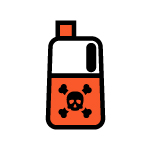 |
Implement laws that prohibit the use of certain toxic products that can threaten a population or an ecosystem. |
In February 2020, French President Emmanuel Macron announced the expansion of protected areas where human-induced changes such as cutting down trees or killing animals are limited. He committed to designating 30% of France as “protected areas” by 2022 to protect the biodiversity of animals and plants.
Despite various international agreements, GHGs are increasing around the world. So what can governments do?
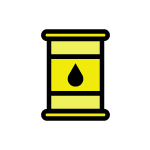 |
Establish standards and regulations to reduce the consumption of hydrocarbons such as oil, coal or natural gas. |
 |
Impose a tax on the purchase of certain vehicles that pollute. |
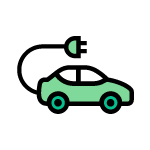 |
Offer a rebate or tax discount to encourage people to buy electric vehicles. |
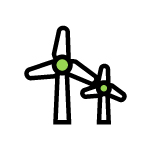 |
Encourage people and companies that use fossil fuels like oil and coal to go green by using renewable energy sources such as solar energy. For example, the Government of Canada launched the ecoENERGY program in 2007 (ending on March 31, 2021), which provided funding to projects that used renewable electricity. |
 |
Implement a system to try to manage GHG emissions generated by industries, like a carbon market. |
Au Québec, selon le modèle de voiture acheté (100 % électrique ou hybride rechargeable), le propriétaire peut recevoir jusqu’à 8000 $ de réduction du provincial (gouvernement du Québec). En plus de ce montant, il peut également recevoir jusqu’à 5 000 $ du fédéral (gouvernement du Canada) selon le modèle de véhicule neuf. Un débat a toutefois lieu concernant les voitures électriques. De fait, certains affirment qu’elles ne seraient peut-être pas si vertes écolos que ce que disent certains.
A carbon market, also known as a carbon exchange or carbon trading system, is a system aimed at reducing carbon (CO2, which is a greenhouse gas) emissions produced by the most polluting companies. This market is complex, but its basic functioning is simple.
- The government sets a GHG cap for the companies most responsible for polluting, meaning they are not allowed to exceed the GHG allowance imposed on them.
- If a company exceeds the maximum allowance, it must purchase emission rights that are donated by the government, often at auctions. These are sometimes called “emission units.” One unit is equal to one tonne of CO2. In 2019, the average price of a government-issued unit was about $21.21.
- There are other ways to obtain these units. Companies that emit less than their allowances can sell these allowances to companies that have emitted more GHGs and need to purchase emission rights. The company that pollutes the most has to pay for it. This is known as the polluter pays principle: if you pollute, you pay.
An emission right represents the permission to emit 1 tonne of CO2. Two terms are used to represent an emission right: an emission unit or a carbon credit.
An allowance is a set quantity that must not be exceeded. For example, a carbon allowance is the maximum amount of carbon an industry can emit.
Which companies are most responsible for polluting and have government-imposed allowances?
The ones with very high carbon footprints that emit more than 25 000 tons of GHGs per year. In Quebec, the most polluting industries are mainly paper mills (that produce paper), refineries (that purify substances, such as oil, to make them usable), aluminum smelters (that produce aluminum) and Hydro-Québec. These companies had to comply with the carbon market and allowances starting on January 1, 2013. Since 2015, allowances have also been imposed on companies that import or distribute fuels, such as oil, used for transport and buildings in Quebec.
25 000 tonnes (25 000 000 kg) is equal to 5000 elephants from Asia (with an average weight of 5 tonnes). 5000 elephants! That is a lot of weight. But GHG are gases. So how can you visualize how much this weight represents? One ton of CO2 is equivalent to a road trip between Montreal and Vancouver, or the amount of water in 358 hot tubs that can fit 6 people!
By establishing the carbon market, the government aims to encourage companies to reduce their production of polluting emissions. Over the years, the government has decreased the quotas it gives to industries. By doing so, the government hopes that GHG emissions from industries will gradually decrease. For 2020, the Government of Quebec set the cap at 55 million tonnes of GHGs.
This market was put in place to help Quebec meet its objective to reduce GHG emissions by 37.5% by 2030, compared to 1990. This target can be achieved through the first stage of the carbon market, which involves setting maximum GHG production allowances for companies most responsible for polluting. This should help control GHGs emitted by these companies. Each year, these allowances are reduced in an attempt to reach the 37.5% target.
This type of carbon market is being established in Quebec, California and some European countries. Quebec has linked its market to California’s market. Companies operating in these provinces or countries can trade (buy and sell) their emission rights according to the polluter pays principle
This concept should not be confused with the Canadian carbon tax.
The carbon tax is a measure implemented by Justin Trudeau’s Liberal administration on April 1, 2019. On this date, the federal government started collecting a carbon tax in Canadian provinces that lacked a system or had an inadequate system for pricing GHG emissions: Saskatchewan, Manitoba, Ontario and New Brunswick. Alberta was eventually added. Quebec is not affected by the federal carbon tax since it has already implemented the carbon market.
Pricing is the act of setting the price of payment for something offered for sale. For example, applying a dollar amount to pollution, specifically greenhouse gas (GHG) emissions, is an example of pricing.
The idea behind carbon pricing is to make companies pay when they emit a lot of GHGs.
-
The Canadian government puts a price on carbon, which is the main contributor to air pollution. The price in 2019 was $20/tonne. The carbon tax applies to fossil fuels, including gasoline, coal and natural gas.
-
The carbon tax is applied to businesses, but consumers often end up paying the bill because businesses simply increase the cost of the goods they sell to cover the price of the tax. For example, this tax increased the price of gas at Canadian gas pumps by about 5 cents per litre in 2019.
The goal is to encourage companies to reduce their GHG emissions, but also to encourage citizens to reduce their use of fossil fuels.
The carbon tax and the carbon market are different methods of pricing carbon to reduce pollution. The money from the carbon tax goes directly to the government. This is also the case with the carbon market. The money made by the government from the sale of emission rights goes back to the government. However, unlike the carbon tax, companies that pollute less can also make profits by selling their unused allowances to companies that pollute more.
This concept of taxing or pricing carbon exists in many countries around the world, such as Colombia, Australia, Mexico and Japan.
|
The Carbon Market |
Carbon Tax |
|---|---|
|
Goal |
|
|
Reduce pollution |
Reduce pollution |
|
Tools |
|
|
Setting allowances If a company exceeds the GHG allowance, it must buy emission rights. |
Fixed price per tonne Companies pay according to their consumption. |
|
Where the Money Goes |
|
|
To the government and companies that sell their emission rights. |
To the government. |
|
How it Impacts Companies |
|
|
The less they consume, the less they pay. They can make money by producing less. |
The less they consume, the less they pay. |
|
How it Impacts Consumers |
|
|
Companies may pass the bill to consumers by increasing the price of their products. |
The price of the tax is often added to the price of a product. |
Beaulieu, Isabelle et collab. Mondes, 2010, pp. 8-9, 14-17, 28-33.
Brodeur-Girard, Sébastien et collab. Immédiat, 2009, pp. 51, 54-55.
Ladouceur, Maude et collab. Globe, 2014, pp. 57-59.